This artisanal-style sourdough rye bread has a dense, chewy crumb that's touched by the lightest swirl of molasses and a sprinkling of caraway seeds. It's made from both light and dark rye flours. Toast it and slather it with butter or chicken liver pâté.
Jump to Recipe | What is it? | What's in it?

What is it?
Sourdough rye bread is a traditional, artisan-style bread made from a blend of light and dark rye flours and sourdough starter. Rye flour contains a weaker gluten matrix than wheat flour (gluten is the protein that gives bread structure as they rise). For this reason, it tends to produce a denser bread than wheat and performs poorly with bakers yeast.
While traditional bakers yeast doesn't work well for rye flours, sourdough starter does. That's because sourdough starter contains both yeast and lactobacillus bacteria. The lactobacillus bacteria increase the acidity of the dough as the bread rises, which strengthens the starches and produces better bread.
You'll find rustic, artisan-style sourdough rye bread in European baking traditions throughout northern, central, and eastern Europe, Scandinavia, Ukraine, and Russia. This style of bread formed a staple of traditional medieval European cookery.
What's in it?
At its simplest, sourdough rye includes a sourdough starter, rye flour, and salt. To this basic blend, you can mix in caraway seeds and other spices as well as sweeteners such as honey or molasses. Molasses gives the bread a darker color, depending on the amount you use.
- Light rye flour is made from the endosperm (or white part) of the rye berry, without any of the bran or germ. It has a light flavor and texture, and makes the bread softer and less dense.
- Dark rye flour gives the bread flavor, as well as a boost of nutrition since it includes the bran and the germ. These parts of the rye berry contain fiber and various micronutrients.
- Sourdough starter helps leaven the bread. This bread uses 100% hydration starter, which means that it has been fed with equal amounts of flour and water. You can use a rye flour or wheat flour starter to make this bread.
- Minimally processed salt gives the bread flavor and helps to strengthen the dough.
- Molasses sweetens the loaf and gives the crumb a darker color.
If you're gluten-free, it's best to skip this sourdough rye recipe. You can always try this gluten-free sourdough bread as an alternative.

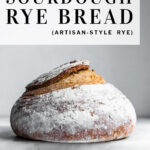
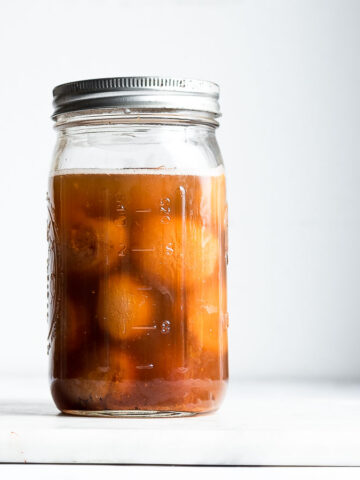
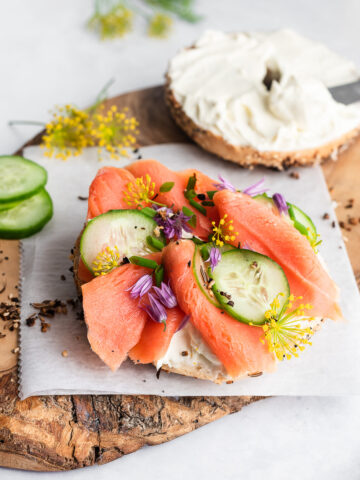

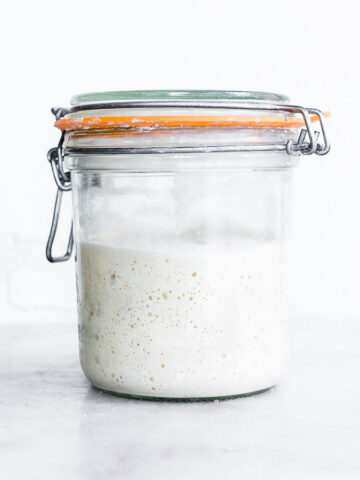
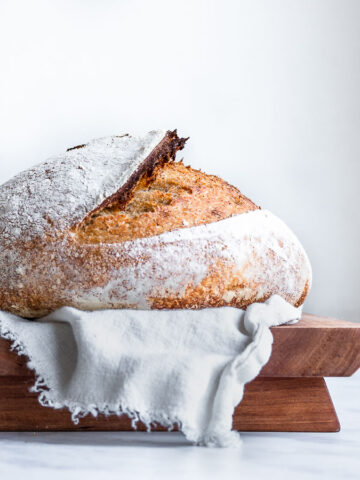
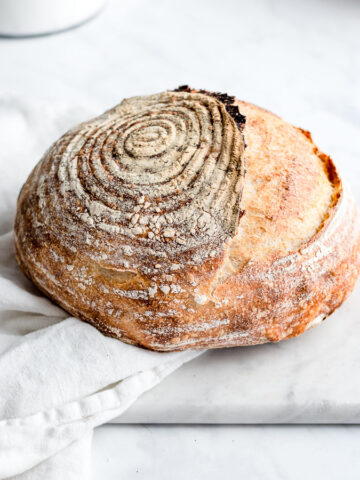
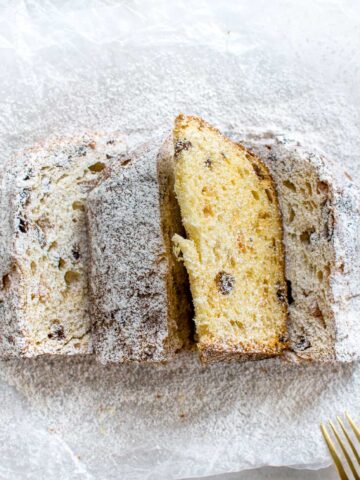
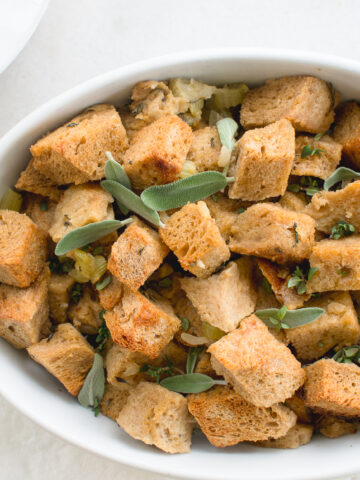
Ann says
Absolutely must have recipe for those craving on rye bread! I made minor sub of molasses with 1tbsp honey and second rise was overnight in the fridge and then baking it in the evening after 2h warming up from fridge. Delicious!
William Deutermann says
A tentative 5! I was concerned that the dough for the levain looked inactive, as it showed no obvious rise in 16 hours, in spite of the very active starter that I had used. Despite misgivings, I went ahead. When I scraped the levain into my mixer bowl, I noticed lots of small co2 bubbles on the inside. The complete dough has now been in my proofing cabinet at 74 degrees for 1.5 hours, and considerable gas has bulged the plastic lid on the bowl. I took the lid off, as my proofing cabinet has humidity control, and the dough looks fine.
Cat says
Thank you for this wonderful recipe!
I'm new to sourdough and bread making in general, having only used a bread machine or made overnight rye loaves with yeast.
Recently I embarked on my sourdough journey after taking an interest in fermented foods and making my own yoghurt and cream cheese.
So I got to it and made my own sourdough starter, Tammy!
This was my (and Tammy's!) first loaf and it is fabulous, thank you!
I cooked in an 8'' Pyrex dish and it turned out deliciously sour, chewy and even got the thumbs up from Hubby who I am training to like' real'bread 😂.
Can't recommend it enough. Thank you again xx
Lisa O. says
Bread came out so moist and chewy! I used mostly all purpose flour for my starter and fermented it for about 10 days first. Turned out wonderfully sour! I was skeptical because my last attempt came out like a brick (the rye dough is so sticky and hard to work with!), but your kneading tips were great and the bake time was perfect, I put a glass baking dish of water in the oven with the loaf. Will make again!
Charry says
I've had so many failed attempts at baking with rye flour. I have a bag of rye berries I experiment with periodically. So please help me with following this recipe: How do you create the sourdough starter or use yeast instead? Thank you.
Colleen says
Wow, this is awesome! Thanks for sharing this on your blog, I love finding new whole foods bloggers out there! I also love rye, but have never used 100% rye. Now I want to try it! I might have to get the book.